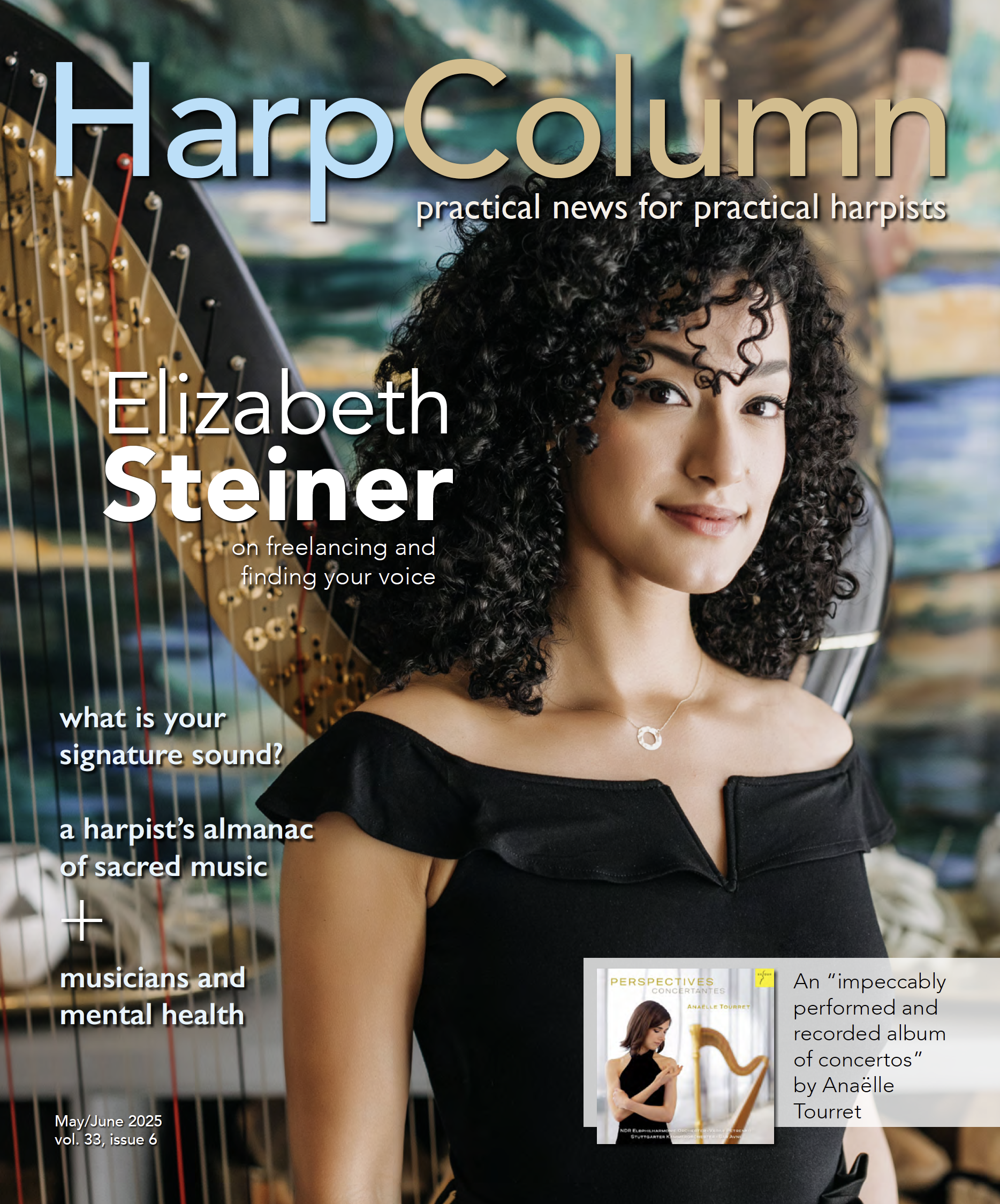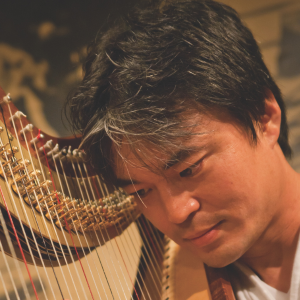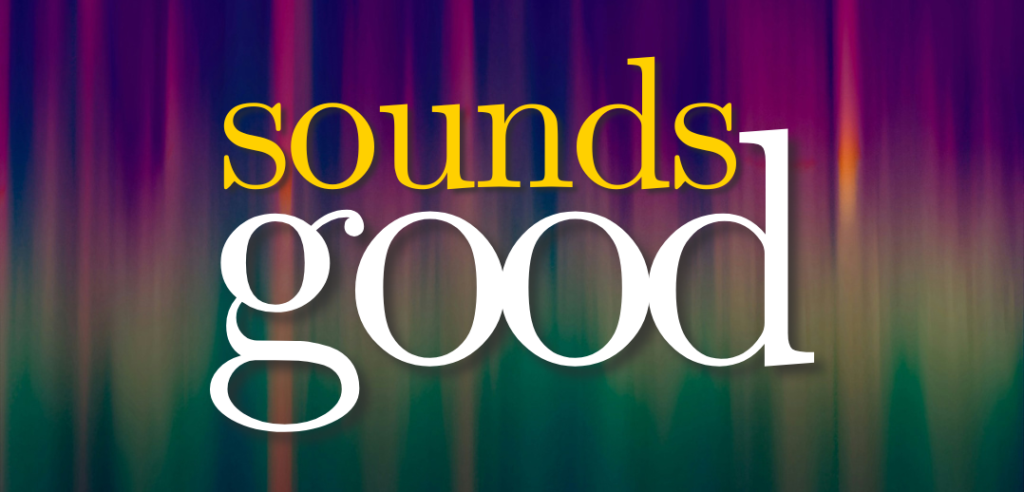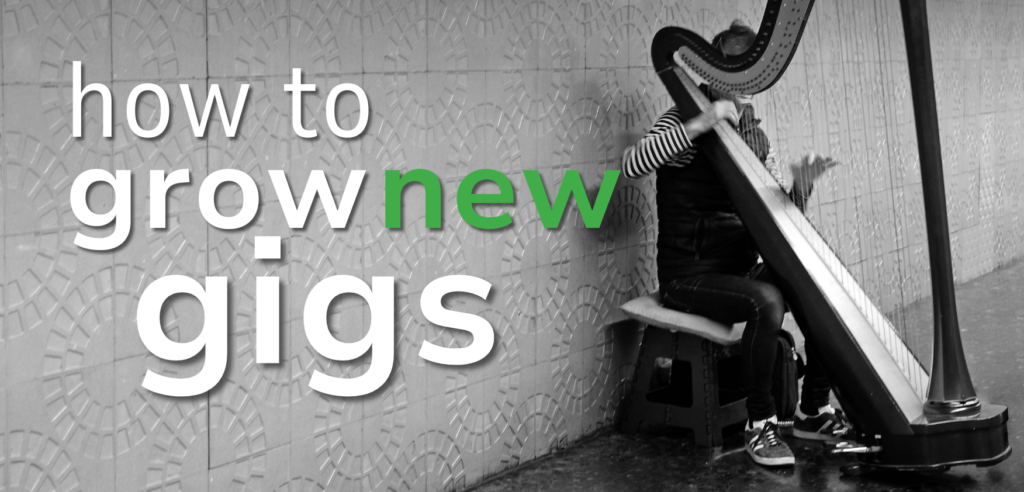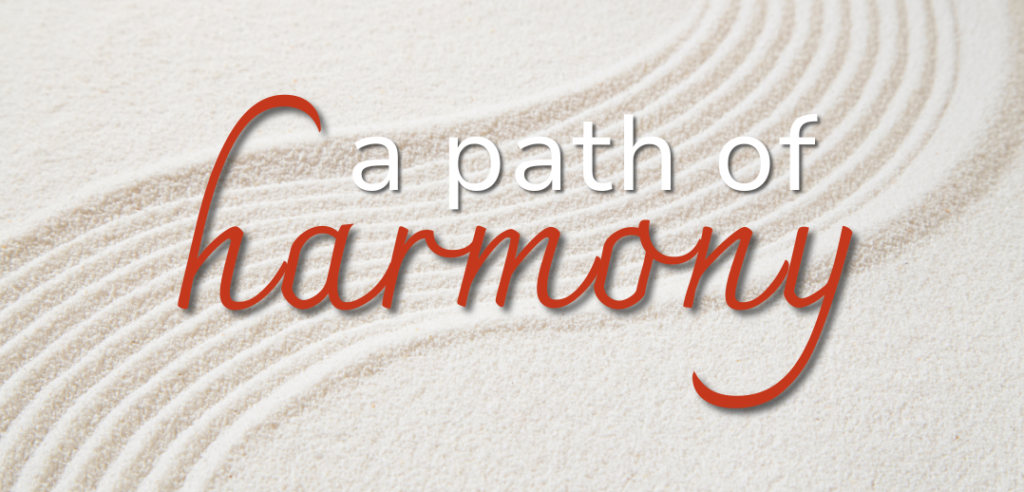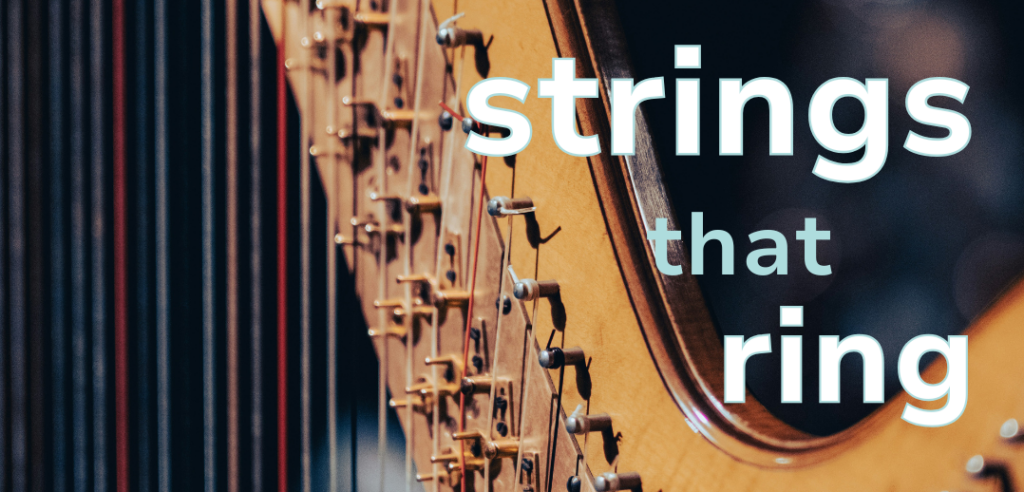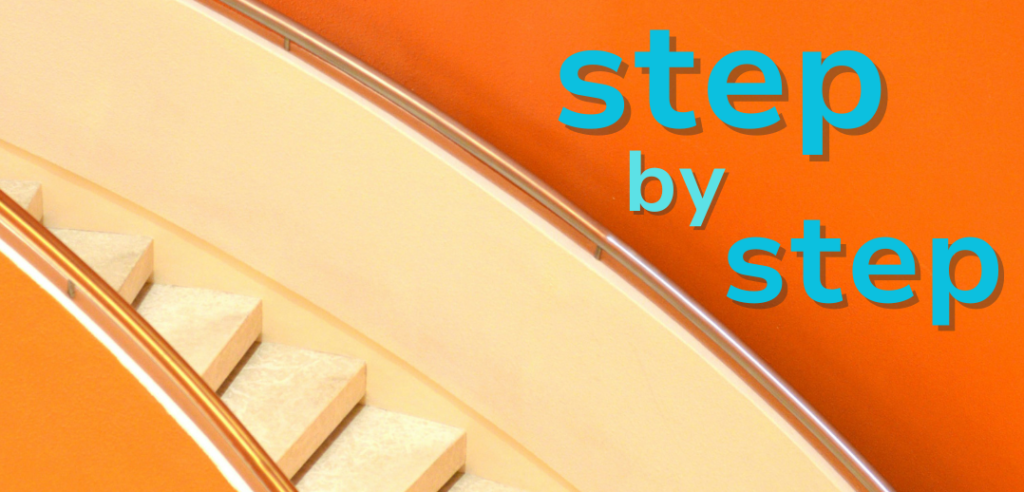More to explore
Practical Tips from Bushido
Ways to incorporate Bushido principles into your harp life right now
Motoshi’s Musings
Author Motoshi Kosako shares his struggles with the harp and his reasons for writing about Bushido principles
Walk in the Footsteps of the Master
Applying the Precepts of Musashi Miyamoto
For over 20 years, I have been a full-time professional harpist, improviser, and composer. Though I started my musical journey as a guitarist, I transitioned to the harp at 28—an age considered late to start mastering such a complex instrument. Despite beginning as an adult, I went on to become the principal harpist of a professional orchestra in California, developed my own distinct jazz harp style, toured and taught internationally, collaborated with world-renowned musicians, and created 17 albums of original music.
I am deeply grateful for all my experiences that made me who I am today. Yet, behind these accomplishments was a story of intense struggle—a story that I hope may resonate with others walking their own challenging paths as musicians.
In my early years as a harpist, I sacrificed my health and personal life in a relentless pursuit of success, driven to match the proficiency of harpists who had started as children. This led to a serious decline in my physical health and a dissolution of my personal relationships.
Stage fright was also something I struggled with more intensely after I transitioned to the harp. The mental tension I experienced during performances manifested physically: my hands would grow cold and stiff, my breathing would become shallow, and I would tremble uncontrollably. Memory blanks during performances became regular occurrences. No amount of additional practice or more frequent performances seemed to break this cycle.
During this time, I was solely focused on external achievements, believing that career milestones would lead to fulfillment. I lost sight of the holistic values that had once grounded me, values I had been exposed to in my youth through the philosophy of Bushido—the way of the Japanese warrior. Bushido emphasizes self-discipline, integrity, and continuous self-development across the mind, body, and spirit.
Reconnecting with Bushido allowed me to see music, life, and personal growth as intertwined, each enriching the other. By focusing on this holistic approach, I learned to approach harp practice and performance in a way that enriched my entire life, rather than depleting it.
As I deepened my understanding of Bushido, my life became richer and more balanced. Music transformed from an isolated endeavor to an integral expression of who I am. Every activity in my daily life became an opportunity for growth as a musician, and my music, in turn, became a sincere reflection of my true self.
Bushido: The traditional way of Japanese Warrior-Samurai
At its core, Bushido is a holistic approach to life that seeks to develop one’s highest potential physically, mentally, and spiritually. Traditionally, it was the code of conduct for samurai, emphasizing rigorous discipline to prepare them for life-and-death situations. Bushido contains these three primary forms of discipline.
Tanren: Tempering oneself through rigorous mental and physical conditioning.
Shuren: Self mastery through consistent practice.
Shugyo: Spiritual discipline and self-cultivation.
This comprehensive approach is deeply embedded in Japanese culture, which I grew up with, and these words are still commonly used in training of various professional skills, sports, performing arts, craftsmanship, and so on.
Personal connection to Bushido tradition
Growing up in Japan during the 1970s and 1980s, I was immersed in a culture where Bushido’s influence was still felt, even in everyday life. Samurai heroes filled the movies and television shows of my youth, and even popular sports characters were portrayed with the stoic discipline of a samurai. But beyond entertainment, I encountered the principles of Bushido firsthand in my education.
I attended a Catholic school for six years, where the principal—a high-ranking Judo black belt and professor of Oriental literature—often spoke about the tenets of Bushido. Our high school was among Japan’s top 10 academically advanced schools, but he always encouraged us to pursue both academic and athletic excellence, teaching us that life’s purpose was to grow into “bringers of love and light” in the world. This holistic approach deeply influenced me. I gave my all to my studies, sports, and music, excelling in ways that surprised even myself.
In high school I became the captain of the judo team, a semi-finalist in state Judo competition, a local guitar prodigy, the vice president of student council, and earned entrance to Japan’s top university. The holistic engagement in both mental and physical disciplines, rooted in Bushido, shaped my youth and early successes.
But later, as I entered adulthood, I began to lose this connection. Society often pushes us toward narrow paths, defined by singular pursuits and “professional” success. And so, when I took up the harp, I focused solely on building a career as a musician. I worked harder than ever, driven by the fear of falling behind, neglecting the balanced path that had once brought me fulfillment.
The consequences of this imbalance were severe. My health deteriorated, my marriage ended, and I found myself questioning why I was pursuing music at all. In a moment of reflection, I recalled the principles of Bushido that had guided my youth. I realized that I had lost touch with the holistic discipline that once brought harmony to all aspects of my life.
Rediscovering Bushido through music
When I began applying the principles of Bushido to my music, I began to approach music differently. I let go of the urge to prove myself and started to see each practice session and performance as a chance to grow, not just as a musician but as a person.
The mental and physical training required in martial arts offered valuable lessons that applied directly to music performance. Stage fright, for example, is akin to the fear that a martial artist confronts in a combat situation. In both cases, it is not just physical preparation that matters but mental and spiritual readiness.
By integrating the Bushido mindset into my music practice, I found that music was no longer an isolated part of my life but a reflection of my entire being. I was able to develop as a musician while raising my family, caring for our homestead, and learning new skills. Music became a part of my life, rather than an all-consuming endeavor. It enriched my daily experiences and allowed me to grow more fully into who I am.
Applying Bushido to music
The concept of self-improvement in Bushido shares similarities with the Renaissance ideal of becoming a well-rounded individual, like Leonardo da Vinci. However, Bushido is rooted in a discipline uniquely suited to prepare one for extreme situations where decisions and actions carry life-or-death consequences. Unlike the Renaissance approach, Bushido treats each moment of daily life as an opportunity for self-training, requiring the same level of focus and intention as in Budo (martial arts) practice, with the understanding that sudden, extreme challenges can arise in any aspect of life.
In Bushido, there is a saying: “Walking is martial arts,” which emphasizes that training encompasses all actions. In martial arts, the mental shift between practice and real combat must be minimized to avoid physical and mental disruptions, such as stage fright, that can lead to fatal outcomes. Music training, on the other hand, tends to create a separation between rehearsal and performance, allowing for different mental states in each context. This shift in mental state, though natural in music, can trigger stage fright as the mind and body respond to the heightened stakes of live performance with unfamiliar tension, often causing mistakes in pieces otherwise well-prepared.
In martial arts, the stakes of stage fright can be life-threatening, making the cultivation of a steady, consistent mental state as critical as technical and physical training. In music, while a missed note doesn’t endanger life, the stakes feel high. Yet mistakes can’t be undone, and a single misstep may lead to setbacks in one’s career. From my experience as both a musician and martial artist, I’ve found that the internal experiences of musical performance and martial combat are strikingly similar, which makes the ideal internal state developed through Bushido directly applicable to the demands of musical performance.
The ideal internal state for music and life: ordinary mind
In martial arts, the ideal internal state is to maintain heightened awareness—a broad and open consciousness that encompasses every corner of the mind and body. This allows one to respond instantly to any change, shifting the distribution of awareness fluidly like water and remaining undisturbed by external events. Musashi Miyamoto, Japan’s greatest swordsman, simply called this state “ordinary mind.”
This concept is particularly relevant to music. During a performance, we are constantly adapting to the present moment. The ability to remain fluid, responsive, and fully present is essential. In the same way that a martial artist must be ready for anything in combat, a musician must be ready to adjust to the flow of the music, the audience, and the environment.
When I first heard the term “ordinary mind,” I imagined it referred to a casual, everyday state of mind with distracted attention and vague consciousness. In reality, it is the opposite. Ordinary mind is a state of mind that allows one to deal with situations that suddenly turn into a battlefield due to an enemy attack. When we say this, one tends to think of ordinary mind as a state of tension filled with mental stress, but this is not the case. Ordinary mind is a state of mind in which one experiences every moment with one’s whole body and soul and with a calm but high level of attention, akin to the mindfulness achieved through meditation, or the inner state of being in the present.
However, in Bushido, the goal is to achieve this state not only during seated meditation but also during daily activities and combat situations. Every action in daily life becomes an opportunity for training, and this principle fits perfectly within musical practice as well.
The calm state of mind free from attachment, embodied in ordinary mind, is often likened to the surface of clear water. This state, transparent and reflective like a mirror, is called “Mushin,” or “no mind.” However, “no mind” does not imply emptiness; rather, it is a state of mindfulness and clear consciousness.
When I began treating each moment as an opportunity for mindful awareness, I could approach performances with a calm openness, accepting each moment for what it was. This shift allowed me to let go of fear, embrace imperfections, and play from a place of authenticity and trust.
We often face high expectations and the pressure to perform perfectly. But in truth, music—like life—is not about perfection. By embracing presence, we allow each performance to be an honest reflection of ourselves in that moment, free from the fear of judgment or failure. This is the essence of ordinary mind, and it is a powerful state from which to create music.
The wisdom of “DO”—elevating daily activities to art
Contrary to its name, ordinary mind is not easy to achieve in daily life. The Japanese tradition of “do,” meaning “the way,” offers wisdom for overcoming this challenge. In Japanese tradition, many aspects of daily life have been elevated to do. Activities like calligraphy (shodo), tea ceremony (sado), and flower arranging (kado) become paths for self-cultivation, giving us a chance to bring mindfulness, discipline, and artistry to the simplest moment.
Do requires not only technical skill but also the commitment to deeply respect traditions, the training space, training partners, teachers, and equipment. For example, when the martial art of throwing techniques, joint locks, and holds evolved into do as judo, every element associated with its practice became a subject for self-mastery. This included the etiquette of entering and leaving the dojo (practice room), the way to sit and stand, how to vocalize and greet, attitudes and language toward teachers and peers, handling equipment, cleaning and organizing the dojo, folding the gi (training attire), and understanding the principles of judo.
You can elevate any activity from daily life into a form of do, not only by following Japanese tradition but by choosing a subject that resonates with you. For instance, if you don’t drink tea and cannot practice the tea ceremony, but you do drink coffee, you can create a stylized form involving a series of mindful actions—preparing coffee beans, brewing with care, savoring each sip with full attention, and cleaning up neatly afterward. Consciously approaching this process with intention can create a “way of coffee.”
From a holistic perspective, the opportunities to train physical control, attention, and mental strength required for music extend beyond practicing and performing the instrument. They can be found in a broad range of everyday activities.
Playing harp, too, can become a form of do. When we approach our practice, performance, and even the maintenance of our instrument with the same level of intentionality, we transform our relationship to the craft. Instead of viewing music as something separate from life, we can see it as a reflection of who we are and an opportunity for continuous growth.
This holistic approach resonates deeply with my own experience. Whether I am playing the harp, tending to my homestead, or practicing martial arts, I strive to bring the same level of awareness and dedication to each activity. By doing so, I begin to see my life as full of opportunities to cultivate self-awareness and deepen my connection to the art, and I allow my life and my art to inform and enrich each other. The result is music that reflects not just technical skill, but who I am.
Embracing Impermanence: The Flow of Music
Japanese culture holds a deep appreciation for mujō, or impermanence, which teaches us that all things are in a constant state of change. We see it in the cherry blossoms, which bloom brilliantly only to fall within days, reminding us of the fleeting nature of all things.
Music, too, is inherently impermanent. Each note exists only for a moment, and once it passes, it is gone forever. What we have is a fragment of sound—a tiny part of an entire piece unfolding over time. We experience each moment of sound differently, and we cannot hold onto it or perceive the piece as a whole. Yet, we can appreciate its beauty in the present moment. This understanding has profoundly influenced my approach to performance. Rather than striving for perfection or fearing mistakes, I have learned to embrace the flow of music, trusting that each moment contributes to a greater whole.
This perspective on impermanence helped me to see that each note, like each moment in life, is unique and unrepeatable. Rather than holding onto each note, I learned to let it flow through me, trusting that my playing in that moment was the best outcome of my current self.
Mind, body, and technique in harmony
Ordinary Mind is characterized by a non-attached, fluid awareness that responds moment by moment to the ever-changing external world. To collaborate with this adaptable state of mind, our bodies must also develop fluidity. When the mind and body achieve this harmony, true technique emerges. In Bushido, the triad of shin (mind), gi (technique), and tai (body) is considered inseparable for mastering any art, especially the martial arts.
To understand how body fluidity benefits harp playing, consider this: the harp is a hard, solid object, while your body is flexible, made up of mobile parts. For these two contrasting forms to create music together, which one must adapt and change shape moment by moment? The answer is clear: our bodies must continually adjust to bring forth music.
Teaching harp techniques by focusing on form—such as hand positions or arm shapes—is a quick and effective way to help students play in the short term. But in the long term, it’s essential to recognize that forms are only snapshots of a movement required to create a specific sound in a specific moment. To respond to the requirements of each moment, harpists must cultivate fluidity in both mind and body.
In Japanese martial arts, we practice Kata (form) to understand the mechanics and theory behind techniques. Yet, as valuable as Kata is, it cannot be applied in a real combat situation exactly as practiced. For practical application, we need to move beyond form and embrace the underlying principles distilled from Kata to handle the uncertainty of real situations. This transition can feel challenging as it requires stepping beyond the security of form, but I’ve found that when I successfully maintain a state of Ordinary Mind and fluidity in body, this shift occurs naturally. In this state, body and mind seem to intuitively know what to do, and music flows effortlessly through me.
Taking the path
The principles of Bushido offer musicians a path to greater mastery, not just in their craft, but in their lives as a whole. By cultivating self-discipline, mindfulness, and a deep connection to the present moment, we can transcend the obstacles that hold us back—whether it’s stage fright, physical limitations, or the pressure to succeed—to see the opportunities for our growth.
In my own journey, returning to Bushido has allowed me to find balance, purpose, and joy in everything I do, and to approach music in a way that enhances my life rather than consumes it.
To my fellow harpists, I offer this perspective as an invitation: consider what it might mean to bring these principles into your own practice. What would it feel like to approach each note, each performance, with the presence of Ordinary Mind, or to view your instrument as part of a broader journey of self-mastery? My hope is that you find, as I have, that music and life can be woven together to create something truly beautiful—a path of harmony, fulfillment, and connection in your art and life. •
Practical Tips from Bushido
Here are some ways to incorporate Bushido principles into your harp life right now.
To overcome stage fright and performance anxiety
1.Treat practice and performance the same way
Approach playing the harp with full intention and attention, whether practicing or performing. The process of creating music remains consistent, regardless of an audience’s presence. Music is an expression of your inner self, not just for external validation. Embracing this perspective will alleviate the pressure of audience expectations.
2. Self-validate your music
Accept that you can never fully know what an audience expects. Your duty as a performer is to deliver what you believe is beautiful and worthy of sharing. By focusing on meeting your own standards, you can reduce much of the anxiety that comes from worrying about audience approval.
3. Prioritize your internal state
Music conveys your internal state. If you feel anxious or fearful, that energy will be reflected in your performance. Cultivate the emotions you wish your audience to experience—such as harmony, joy, or gratitude—and let that guide your playing.
4. Accept the reality of uncertainty
Most panic happens when we confront something unexpected. But unexpected challenges are an inevitable part of life and performance. Embracing the fact that not everything can be anticipated allows you to approach uncertainties with confidence and adaptability, minimizing panic and stress.
Integrating the discipline of music into daily life
1. Practice harp without the harp
Good technique depends on accurately controlling your body to achieve the desired sound. You don’t always need a harp to practice this skill. In any activity done with clear intention, you can exercise precise body control by following these steps:
• Visualize the desired result as clearly as possible.
• Place attention not only on the part of the body directly involved but on your entire body. Maintain a state of “Ordinary Mind,” where your mind is calm and present.
• Evaluate whether your movements achieve the intended outcome.
• Adjust attention and movements to refine your results.
These steps can be applied to almost any daily task, such as washing dishes, brushing teeth, cleaning, or driving, turning them into mindful practices.
2. Practice musical expression beyond music
Musical expression communicates your internal experiences—emotions, thoughts, and visions. Without an instrument, you can cultivate this by approaching other forms of communication mindfully:
• Clarify the internal experience (thoughts, mood, emotions, energy) you wish to share.
• First experience that state fully, such as love or happiness in yourself, and then implement appropriate tone of voice, the way of speaking and mannerism in communication, much like tone, intonation and phrasing in music.
• Check if the impressions you create align with your intention and resonate with others.
• Refine and repeat the process to improve.
3. Use any tools as if you are playing the harp
It is important for harpists to develop a sensory connection where the instrument feels like an extension of their body. This can be practiced with everyday tools like a kitchen knife, scissors, broom, power tools, or automobile by applying this approach.
Start by choosing a few activities requiring tools to apply this exercise. Recall the state of “ordinary mind” and use it during these tasks. Over time, expand this habit to other activities.
Years of applying this method have shown me that mistakes, like breaking objects or minor injuries, often happen when intention and attention are lacking. Similarly, errors in music performance often stem from the absence of clear intention and controlled attention.
4. Create a ritual routine around harp practice
In disciplines like Judo, where every practice element is part of the path do, harp playing can similarly be elevated to “Harp do,” a holistic approach to personal growth.
Mindful rituals
Mindful rituals before playing help prepare you physically and mentally. A consistent routine can override the discomfort caused by the difference between practice and performance environments. Here is an example routine to try:
Before beginning
1. Wash your hands
Use warm water and address any immediate needs, such as
hydrating.
2. Set up your space
Change into comfortable footwear and organize the area around your instrument.
3. Tune the harp with intention
Approach tuning as a moment to bring out the harp’s best sound, listening attentively as you adjust each string.
4. Find comfort and balance
Adjust your harp and chair so that you can sit comfortably, allowing the harp to balance almost naturally with minimal force from your body.
5. Cultivate a fluid state of mind and body
Take deep breaths to maintain relaxation and ease in body and mind.
During playing
6. Play with full attention and intention
Make every sound with purpose and focus, allowing each note to reflect your presence.
After playing
7. Return pedals to the flat position or put levers down
Resetting the pedals or levers creates a sense of closure and readiness for the next session.
8.Wipe down the instrument
Gently clean the strings and body of the harp with a cloth.
9. Complete the routine
Change shoes and store them away.
Some of the steps seem to have no practical meaning, but they may profoundly affect your internal state.
Motoshi’s Musings

Author Motoshi Kosako shares his struggles with the harp and his reasons for writing about Bushido principles
I wrote this article to address these pain points I have encountered in my harp journey. I hope these thoughts and observations can help you.
1. Late Start & Catch-Up Pressure
Beginning a complex art form later in life often brings a feeling of being behind or inadequate compared to peers who started young. For me, this late start on the harp fueled an intense drive to “catch up,” leading to overworking, burnout, and sacrifices in health and personal life. Rediscovering Bushido helped me temper these pressures, developing self-compassion and shifting my focus from external comparisons to a path of internal growth and self-mastery.
2. Stage Fright & Performance Anxiety
Many musicians suffer from stage fright and performance anxiety, which manifest both physically (shaky hands, shallow breathing, etc.) and mentally (memory blanks, overwhelming fear of mistakes, etc.). I found that Bushido’s principles provided the disciplined yet calm mental state I needed. Focusing on presence and adaptability allowed me to view performances as opportunities for mastery, not sources of stress, enabling me to overcome my performance anxiety.
3. Disconnection from Inner Values
Focusing solely on external achievements like performances, acclaim, or career success can lead musicians to lose touch with the intrinsic meaning behind their art. Bushido’s emphasis on integrity and alignment with inner values helped me reconnect with my core purpose. Grounding my work in personal growth rather than external validation allowed my music to become a true expression of my inner self, reconnecting with the deeper reasons I pursued music.
4. Physical Rigidity and the Importance of Fluidity
Musicians often struggle with physical tension and rigidity, which can impede fluid playing and even lead to pain or injury. Inspired by the fluidity and adaptability cultivated in martial arts, I brought an “ordinary mind” awareness to my body’s movements. This approach allowed me to develop a responsive, relaxed technique, reducing strain and enhancing my performance quality.
5. Perfectionism and Fear of Mistakes
The desire for perfection and the fear of mistakes can weigh heavily on musicians who may feel any misstep could undermine a performance. I embraced the Japanese philosophy of mujo (impermanence), which celebrates the beauty of each moment as fleeting. Applying this perspective to music, I began to view each note as transient and complete in itself, encouraging me to embrace the flow of music without the weight of perfectionism.
6. Balancing Music with Life
For many musicians, the discipline of music feels separate from the rest of life, making it challenging to integrate with other responsibilities. Bushido’s holistic approach inspired me to see my entire life as an interconnected path, where music, family, homestead, and daily tasks all contribute to my growth. This integrated perspective allowed each area of life to enrich the others, creating balance and fulfillment across all aspects.
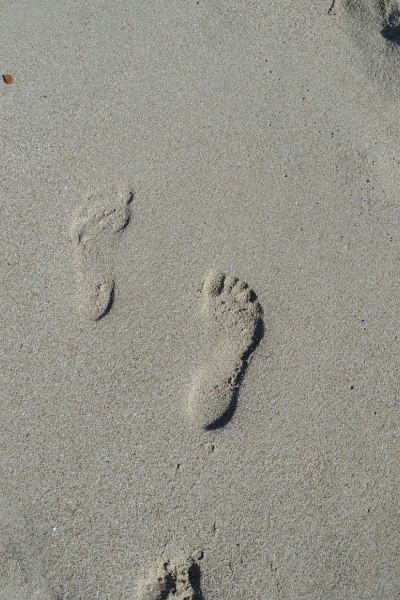
Walk in the Footsteps of the Master: Applying the Precepts of Musashi Miyamoto
Musashi Miyamoto (1584–1645) was not only the most eminent swordsman and military expert of his time but also a well-rounded individual. He was a calligrapher, painter, craftsman, civil engineer, and poet, reminiscent of Leonardo da Vinci, who began as an artist and expanded into military technology and engineering, even though following a different path.
Musashi’s precepts inspired me in my youth and motivated me to integrate Bushido principles into my musical journey. Here are his nine articles and reflections on their application:
1. Keep away from negative thoughts.
Performing with self-doubt or fear of mistakes projects negativity, which audiences can sense. Free your mind of negative thoughts, as they unconsciously shape outcomes. Focus on positive visualization.
2. Train yourself in the way.
View music as a path to self-mastery. Musicians often place disproportionate value on music, neglecting other valuable experiences. Remember, music is just one of many activities contributing to personal growth and fulfillment in life.
3. Be exposed to various arts.
Explore other art forms beyond music—painting, culinary arts, or aromatherapy—to enhance sensory awareness and enrich musical expression. This exposure deepens your artistic potential and enhances your overall creativity.
4. Learn the paths of various professions.
Though modern life encourages specialization, traditional wisdom values versatility. Embrace DIY tasks at home, such as cooking, minor repairs, or harp regulation and maintenance to unlock a fuller range of human potential.
5. Discern the pros and cons of all things.
6. Make accurate value judgments.
For precepts 5 and 6, while musicians develop the ability to judge music quality, Musashi’s teachings encourage evaluating all sensory experiences with similar rigor. These precepts connect to the third one, “Be exposed to various arts.”
7. Perceive and understand what is not visible.
8. Notice even the smallest things.
Precepts 7 and 8 emphasize the importance of recognizing subtle and spiritual aspects of existence and valuing seemingly minor details that contribute to the bigger picture.
9. Do not do the useless.
Time and energy are finite resources. Avoid actions that do not contribute to growth or learning. Mistakes are not wasteful if lessons are learned from them, but self-pity and indulgence are unproductive.




